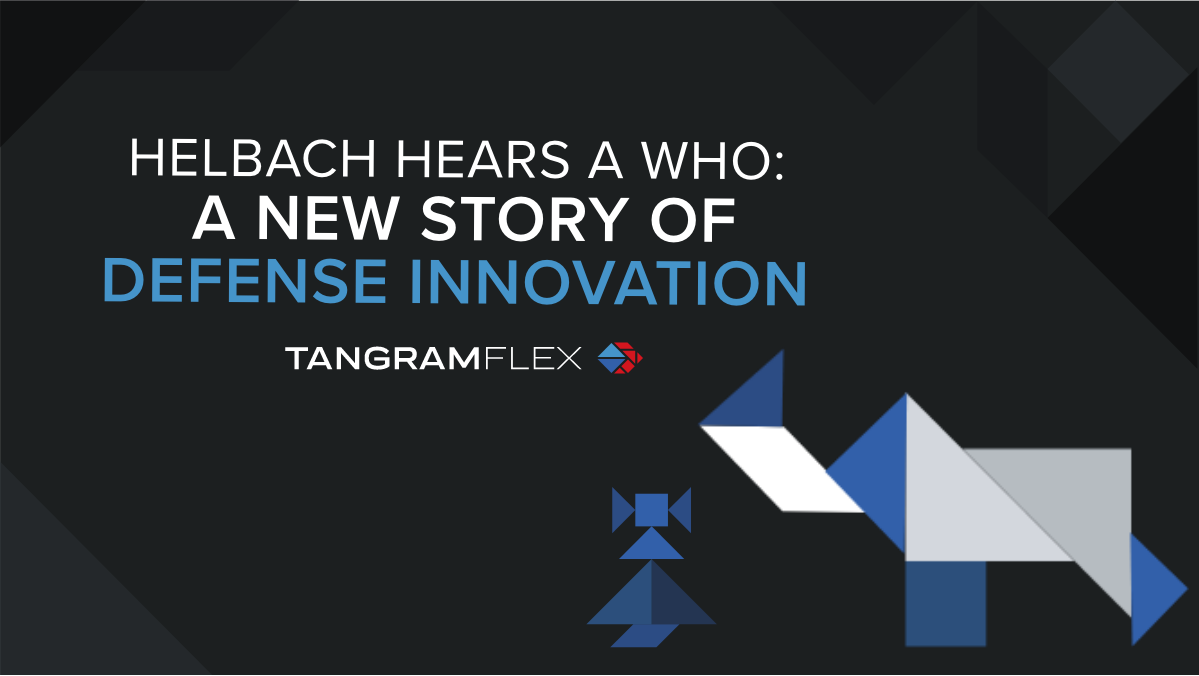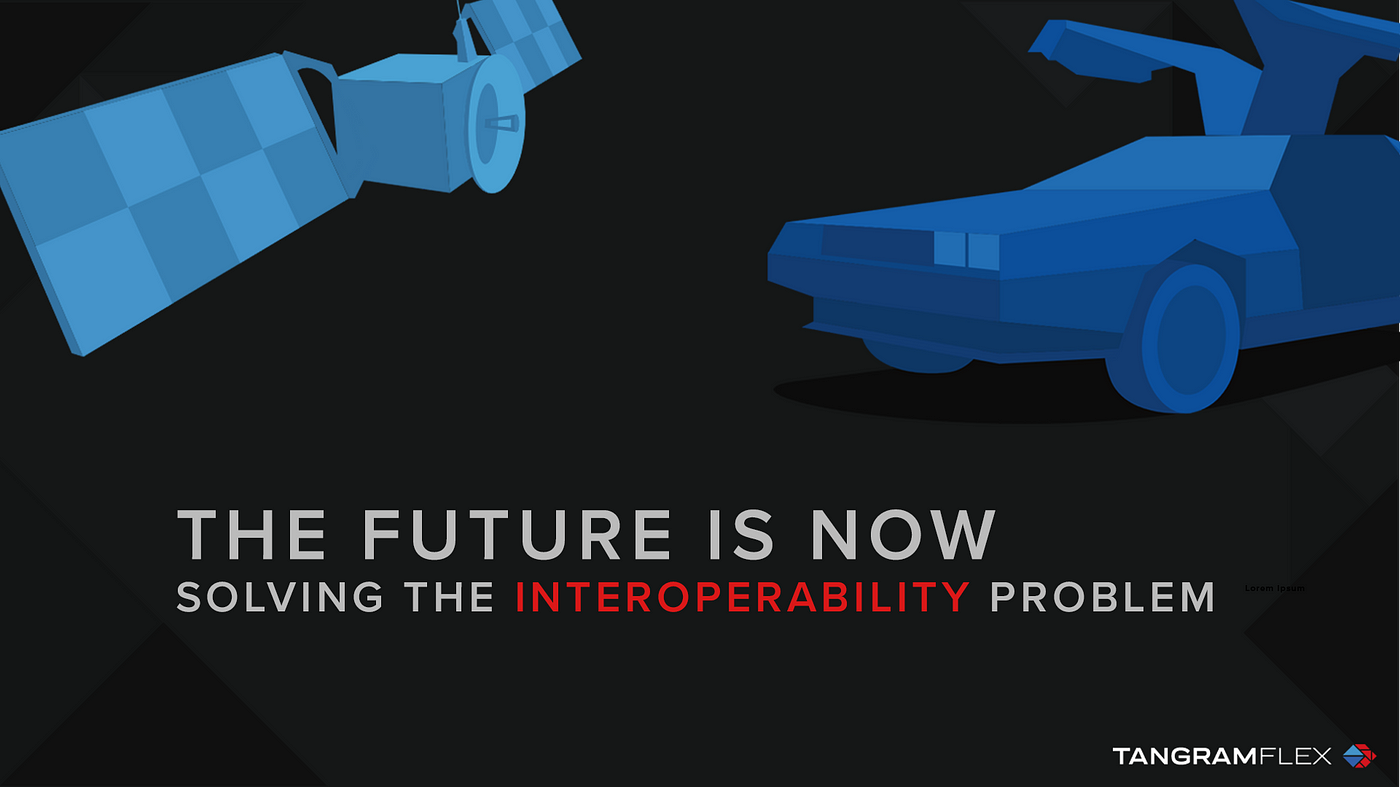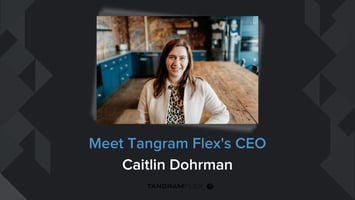Tangram Flex is excited to continue this multi-part series about bridging the treacherous gap in...
Helbach Hears a Who: A New Story of Defense Innovation
Tangram Flex is in the business of changing the way defense systems are modernized and maintained, and we are always thinking outside the box. In today’s post, Ryan Helbach combines his DoD expertise and flair for storytelling to describe a new approach to defense innovation.

You have likely seen some of Tangram’s other blog posts talking about assurance, integration, and interoperability. But what does it mean when all of these ideas come together? Why should you take an interest in the intersection of these problem areas?
When I was asked to write a post I knew that I couldn’t top those previous blogs written from a technical perspective. However, as I was reading my son Dr. Seuss’ “Happy Birthday to You!” I thought I would take this opportunity to tell the Tangram story in a slightly different style.
Think and Wonder, Wonder and Think
We are all familiar with the zany Seussnian town of Whoville, made popular in stories like the “Grinch Who Stole Christmas” and “Horton Hears a Who”. Well, imagine if Whoville was full of all kinds of Whos creating all kinds of new and wondrous technologies. Some of the Who creators make big monstrous contraptions while others just make small little widgets. There are extraordinary new technologies in every shape and size. It seems like every day brings something even more spectacular than the day before. Yet it is hard to get all of these creators to work together to make even better and more creative solutions. When someone manages to get a few Whos together, their hi-jinx and flair for creativity makes it take a ton of time, effort, and resources to actually connect all their pieces.
Now imagine that some of the town leaders in Whoville have visited nearby towns like Whatsylvania and Howland. They see all the marvelous creations those towns are making together and they want to keep up. As hard as they try though, everything is becoming more complex as each new Thingamabob is introduced. The town leaders need a way to bring together all of the big and small Whoventors to be able to swap out their new creations quickly and easily. The elder Whos have been talking about setting up rules to make all the technologies fit with each other so that one Who ContraptionMatraption can be quickly changed with another’s DidgetWidget. Imagine the possibility of thousands and millions of new crazy ideas and solutions unlocked by this framework!
As in any good Dr Seuss story it is always the smallest of the small that has an idea, but struggles to be heard over the din of everyone else. What if there was a way to automatically create glue that would stick all of the Whoventions together? What if there was a way that you could test those new creations to make sure they wouldn’t go haywire when first turned on? What if there was a way that the town leaders could get all of the Whos to work together and still protect what makes their unique creation special? What if?
The Things You Can Think Up if Only You Try
What if all of those Who Leaders, those Who inventors big and small, those Who creators, had heard about the wondrous thing that that smallest of small Who’s had created? A tremendous tool to enable all the Whoventions to work together? A tool that protects the secret inner workings of each Who’s special creation, and a tool that tests the new creations, too!
This Seuss-inspired tale isn’t what we’re used to when reading about system modernization, interoperability, and defense acquisitions policy– but it’s the moral of the story that counts. Companies large and small are developing amazing new technologies each day that, if used together, can give our critical systems capabilities that meet and outmatch those we see from other nations. The DoD and private companies alike want to work together and integrate new technology with old, but it’s not a fast or easy road. Our three-dimensional world experiences many of the same hangups the Whos of Whoville describe: we have ideas we express in different (software) languages, we use different tools, and we move in different directions. We want to keep inventing new capabilities while maintaining our intellectual property rights. But still, we want to share and combine and make powerful tools and systems together– but we need a way to do it more quickly, accurately, and safely.
This is what the Whos of Tangram really care about- and we have used this drive to create a unique tool that Whos everywhere can use called a Component Software Integration Platform (CSIP). Tangram is currently using its CSIP, Tangram Pro™, to help the Whos of the real world, both big and small, share ideas, connect new capabilities together, and know that they are safe. The work is occurring in many areas, including modeling and simulation, autonomy, data and message security, digital engineering, and electronic warfare. While these are all different technology verticals they share the same goals of enabling software components to be easily swapped, upgraded, and secured. Clearly the ability to intermix software solutions applies to even more industries and systems and there are still plenty of Whos out there who we at Tangram are ready to help!
Tangram Flex simplifies software integration for mission-critical defense systems. Every system is unique, but the mission is clear: the people on the ground need dependable, adaptable equipment to get the job done. At Tangram Flex, we understand the challenges of security, speed, and safety. Our team combines engineering expertise with our Component Software Integration Platform (CSIP), Tangram Pro™, to arm engineers with customized toolkits for meeting mission needs.
Tangram Flex is headquartered in Dayton, Ohio. Our staff has experience from DoD, Fortune 500 companies, and innovative software startups. We are dedicated to walking alongside our customers to keep pace with changes in technology. Get in touch: hello@tangramflex.com.






